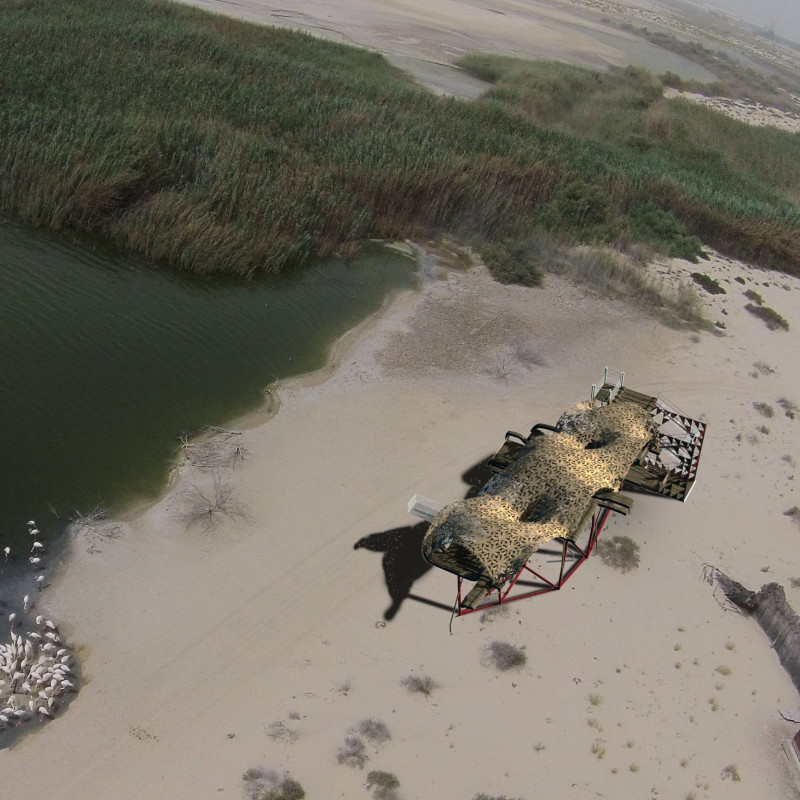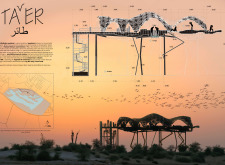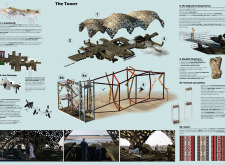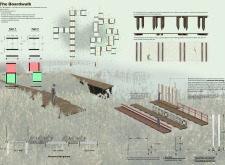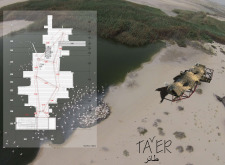5 key facts about this project
The project, known as TA’YER, is situated in the Al-Wathbah Wetlands. This architectural design emphasizes a harmonious relationship between built environments and natural ecosystems. TA’YER serves as a multifunctional space, designed for visitors to interact with and learn about the unique ecological attributes of the wetlands.
The primary function of TA’YER is to facilitate engagement with the surrounding natural habitat, providing both educational and leisure experiences. The design embodies principles of sustainability, integrating human infrastructure with the wetland’s ecosystem. Architectural elements are carefully considered to minimize ecological disruption while promoting environmental awareness.
Sustainable Material Use and Architectural Integration
One of the defining characteristics of TA’YER is its innovative use of materials and design. The structure employs a double structural system using steel frameworks that enhance stability. Additionally, it utilizes 100% recycled wood for raised platforms and walkways, sourced from responsibly managed locations. This approach not only reduces waste but also demonstrates a commitment to sustainability.
The canopy of TA’YER is constructed from advanced composite materials that mimic organic forms found in nature. This element serves both functional and aesthetic purposes, providing shelter while blending seamlessly into the landscape. The design features undulating forms reminiscent of the natural topography, facilitating an immersive experience within the environment.
Engagement with the Landscape
TA’YER includes a network of elevated boardwalks designed for accessibility and to minimize human impact on the wetland floor. These pathways encourage exploration and interaction with various ecological zones, allowing visitors to observe wildlife and plant life up close. Vertical circulation systems, such as the winding staircases, enhance connectivity, leading to different vantage points that highlight the beauty of the wetlands.
The overall design promotes educational opportunities, incorporating interpretive elements that inform visitors about the ecological significance of the area. This focus on education and environmental stewardship sets TA’YER apart from standard architectural projects, as it actively engages the public in meaningful dialogue about sustainability.
To gain a deeper understanding of the architectural designs, plans, and sections of TA’YER, readers are encouraged to explore the project presentation further. Detailed insights into the architectural ideas and functional elements can provide a more comprehensive view of this thoughtful integration of architecture and nature.


